The 100 Best Silent Films of All Time
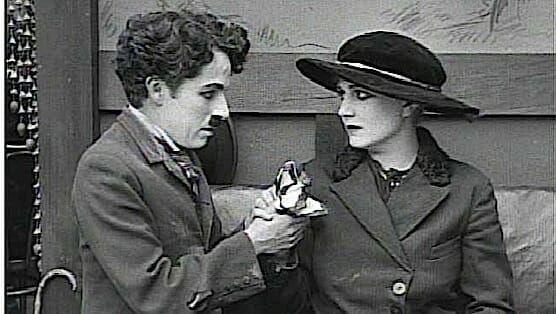
The era of silent cinema was one of the most creative periods in human history. In not much more than 30 years, a new visual vocabulary was invented, explored to the fullest and even deconstructed. Genres formed as the medium was used for entertainment, politics, education, propaganda and experimentation. The challenge of visual storytelling without sound pushed filmmakers to find new ways to tell stories and communicate ideas. This list is an attempt to highlight the best silent films, not the most historically significant ones. That’s not to say there’s not overlap, or that historical context can’t play a part in greatness, just that it wasn’t a sole qualifying factor. There are plenty of gems and highly influential titles not on this list, and you never know what will rise up from an archive somewhere, so don’t be afraid to explore. And if you have a chance to see a silent film in the theater with live accompaniment, take it.
Here are the 100 best silent films of all time:
100. Mest’ kinematograficheskogo operatora (The Cameraman’s Revenge) (1912)
Director: Vladislav Starevich
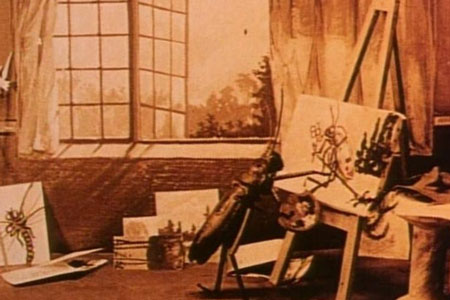
Come for the tale of jealousy and infidelity, stay for the animated dead insects. Polish-Russian animator Vladislav Starevich had a wry sense of humor and a talent for turning little pests into big-screen stars. And so this delightful short features straying beetles, exotic dragonfly dancers and pushy grasshopper cameramen. Starevich satirizes the still-young film industry with a clever story, but the real fun is in his miniature sets and tawdry bugs.
99. Das Cabinet des Dr. Caligari (The Cabinet of Dr. Caligari) (1920)
Director: Robert Wiene
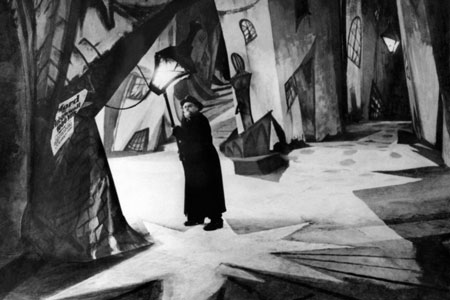
The Cabinet of Dr. Caligari brought German Expressionist film to full view with art direction that’s every bit as dark and twisted as the story it tells. Set in an environment full of askew streets, warped roofs and staircases that travel at impossible angles, no film has the same spooky feel as this tale of a mysterious doctor and the sleepwalker he uses as a murder weapon. While the film’s influence is immeasurable, its visuals were more a catalyst for ideas than a target of direct imitation. This is partly because the look is so out there, and partly because the graphical set design could have lent itself more to the film medium—the painted-on shadows and canvas backdrops can make it seem as if the characters are walking on plywood theater stages rather than through a demented cityscape.
98. Norrtullsligan (The Nortull Gang) (1923)
Director: Per Lindberg

Whether in 1923 or today, it’s rare to see a film about a strong-willed, independent woman and her likeminded friends. There are no flappers or scandals, just discussion of what life is like for these Swedish women, including workplace harassment, judgmental family members and wage disputes. The film even gets away with some pretty long intertitles—generally a big no-no—because the first-person voice’s deadpan humor is so bewitching. The only drawback is the final act’s love story, which maintains the tone, but undermines some of the best themes that came earlier.
97. Suspense (1913)
Director: Lois Weber and Phillips Smalley
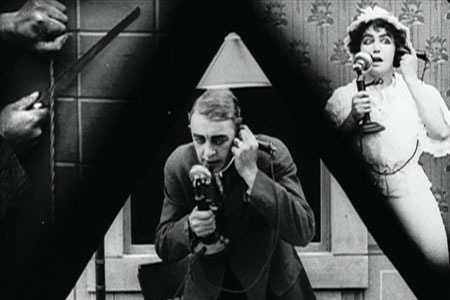
Lois Webber would go on to make several social-message features, some reflecting rather skewed, but nevertheless deeply held worldviews, but her purest cinematic punch is Suspense, a 10-minute collaboration with her husband, Phillips Smalley, that provides exactly what the title promises. The film crosscuts between a woman under siege by a tramp and a husband hurrying home to save her, if he can avoid the police. The inventive camera work ratchets up the tension more effectively than even D.W. Griffith did at the time. What’s most satisfying, though, is how Weber and Smalley distill one of the most primal feelings cinema can offer.
96. Foolish Wives (1922)
Director: Erich von Stroheim
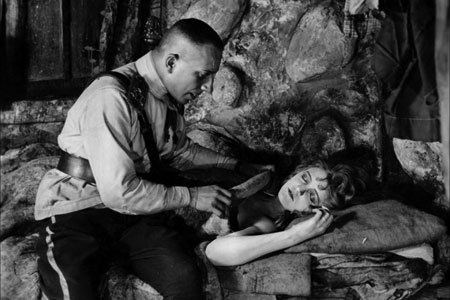
There are plenty of silent dramas about social scandal, but few come with Erich von Stroheim’s coy sense of humor. The famous description of the writer/actor/director as “the man you love to hate” is only problematic in that it’s not all that easy to hate the dastardly fellow, even as he uses his charm to seduce a rich, married woman and siphon her money. In Foolish Wives, he plays Count Wladislaw Sergius Karamzin—or at least a con-man using that name—who lives in a swank castle in Monaco with two con-women who are his lovers and/or cousins. As would happen throughout von Stroheim’s career, the film was drastically edited down prior to release—by at least four hours to get it just short of two—but the abridged work still shows his love for mischief and bold flare. (One character is even reading a book entitled Foolish Wives, written by Erich von Stroheim.)
95. Prästänkan (The Parson’s Widow) (1920)
Director: Carl Theodor Dreyer
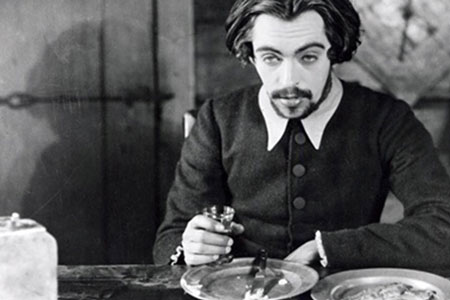
Lots of superlatives can be use to describe Carl Theodor Dreyer’s films, but “charming” doesn’t often end up on the top of the list. That changes when you watch this sweet folk comedy about a new priest who is obligated, by the rules of a small village, to marry his predecessor’s widow. There are two problems: 1. The priest already has a cute, young fiancée whom he has to hide instead of marry. 2. Word on the street is that the widow is a witch. Dreyer’s deep compassion for the human condition comes through in the lovers’ failed covert meetings and the priest’s ill-advised attempts to trick his wicked, old wife.
94. La Sirène (1904)
Director: Georges Méliès
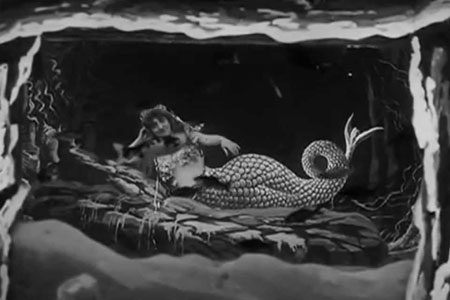
The most-shown Georges Méliès films are his short (though not for the time) narrative efforts, A Trip to the Moon (1902) and The impossible Voyage (1904). While those films are loaded with fun details and ambitious special effects, there’s something to be said for the cinema pioneer’s pure magic films, which are purely about film trickery. The most endearing is La Sirène, which starts off with what look like fairly typical stage magic tricks that then get more and more remarkable. The magician himself even changes into a different person for a bit. Then an aquarium leads us to get acquainted with a lovely mermaid, who has her own plans of transformation. The rapid-fire transitions add to the charm, as Méliès tries to cram as many wonders as possible into his spectacle.
93. Mighty Like a Moose (1926)
Director: Leo McCarey
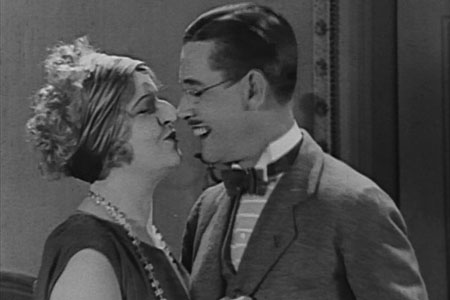
In the wrong hands, Charley Chase’s schtick can get old pretty quick, but the short Mighty Like a Moose shows just how funny the actor could be. Chase and Vivien Oakland play Mr. and Mrs. Moose, a married couple who were perhaps drawn together by mutual unattractiveness. She has a gigantic nose, and he has ridiculous teeth. But when they both have corrective surgery without telling the other, they each realize they can do better and set out to have an affair—which each other, as both are unrecognizable with their new good looks. The farcical premise is silly, of course, but director Leo McCarey commits to it fully and refuses to let either character off the hook, sustaining the laughter long after the concept should have grown stale.
92. Sir Arne’s Treasure (1919)
Director: Mauritz Stiller
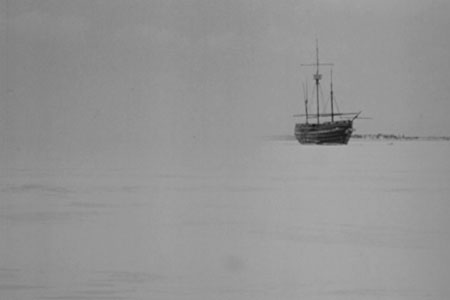
Sir Arne’s Treasure floods the screen with haunted memories, deep regrets and a dreaded sense of whatever the Scots called karma 450 years ago. When the Swedish film industry shifted its focus from quantity to quality in the late teens, the country’s films started displaying some of the richest visuals anywhere. Director Mauritz Stiller had the time he needed to capture the essence of this tale of a Scottish mercenary who falls in love with the only surviving daughter of the family he robbed and murdered. Watch the way the camera snakes around the tower in the prison escape sequence early in the film, or the intimidating ghost sequences that fill the hero with dread.
91. The Water Magician (1933)
Director: Kenji Mizoguchi

Better known for his later films like Ugetsu (1953), Japanese master Kenji Mizoguchi found his voice early on. He crafted this bleak romance with a rich sense of people and place—in this case a troupe of touring performers in provincial Japan. Irie Takako is captivating as the title character, a performer trying to pay her long-distance love’s college tuition, during good times and increasingly bad ones. Japanese silent film includes the tradition of the benshi, a live storyteller who would describe details of the story and recite dialogue while music played. It makes for a unique—if sometimes overly wordy—way to experience a film.
90. A Trip Down Market Street (1906)
Directors: The Miles Brothers
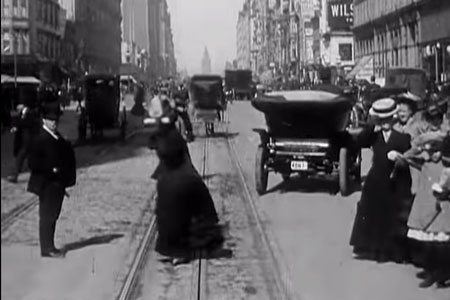
If A Trip Down Market Street were utterly ordinary, it’d still be fascinating for providing a glimpse into life in San Francisco just days or weeks before the 1906 earthquake and fire devastated the city. But it’s not ordinary. It’s like a carefully choreographed ballet as the camera, mounted on a street car, travels 13 minutes from 8th Street to The Embarcadero. If you told me that the hundreds of people seen crossing the street by foot or vehicle were all actors hitting their marks, I’d believe you. There doesn’t seem to be much traffic control in the city beyond hoping people slow down and dodging them if they don’t. To experience that moment in time is a real treat, and one that isn’t possible for any similar moments that happened prior to the movie camera’s invention.
89. The Boat (1921)
Directors: Buster Keaton, Eddie Cline
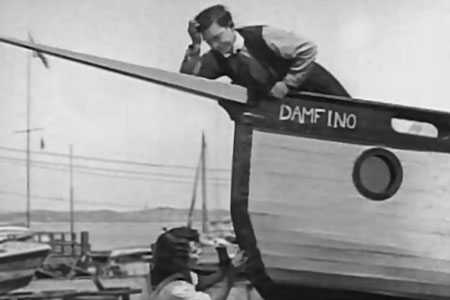
There’s a gag in The Boat in which the hero launches his boat, and it immediately sinks. It seems simple enough, but Buster Keaton actually went through several attempts and engineering adjustments before getting the shot right. If it had sank any other way, it wouldn’t have been funny, he said. That level of commitment to a few seconds of a movie embodies the ethos of the best silent comedy: It may seem on the surface to be pure silliness, but a great deal of thought, strategy and effort went into maximizing the audience’s laughter. The Boat is characteristically loaded with both great humor and great physical comedy—including Keaton trying to stay oriented as his boat is battered around in circles.
88. Il Fuoco (The Flame) (1916)
Director: Giovanni Pastrone
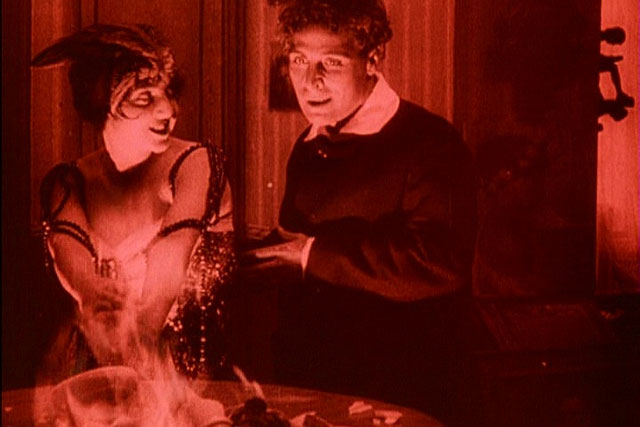
It’s probably unfair to call Pina Menichelli’s character in Il Fuoco a prototype of the “vamp” or femme fatale characters who would come later. There’s nothing proto- or typical about her strange owl-esque performance as a woman with the power to seduce and destroy a young artist. Director Giovanni Pastrone is more famous for his Roman epic Cabiria (1914), but for all that film’s impressive grandeur, it can’t compete with the heartache and chills that the smaller-scale Il Fuoco generates.
87. The Nail in the Boot (1932)
Director: Mikhail Kalatozov
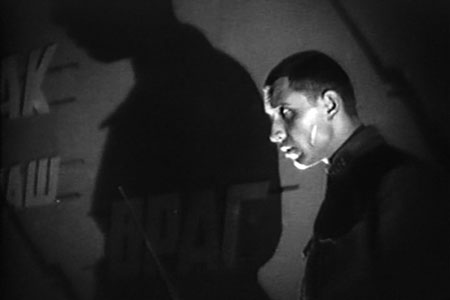
Now famous in cinephile circles for lush visual works like The Cranes are Flying (1958) and I Am Cuba (1964), Mikhail Kalatozov’s reputation might go back further if Stalin’s regime hadn’t repressed his films. His rural documentary Salt for Svanetia (1930) and war drama The Nail in the Boot were both banned for favoring “formalistic aestheticism” over “dialectical materialism.” Luckily, the films survive and we can now see this story of a soldier failing in his mission because of poorly made footwear in all its formal and aesthetic glory. Both the army sequences and, somehow, even the courtroom scene at the end burst with passion and flare.
86. Dragnet Girl (1933)
Director: Yasujiro Ozu

Yasujiro Ozu isn’t generally thought of as a gangster film director, but that’s not the only thing that makes Dragnet Girl so interesting. Ozu pays tribute to the American genre, but doesn’t strictly adhere to it. He creates a weird sort of hybrid setting that’s like an American Japan, and populates it with characters facing genuine moral dilemmas. Working with high stakes, Ozu makes a film that’s more urgent in plot than his familial dramas, but no less artful.
85. The Lodger: A Story of London Fog (1927)
Director:Alfred Hitchcock
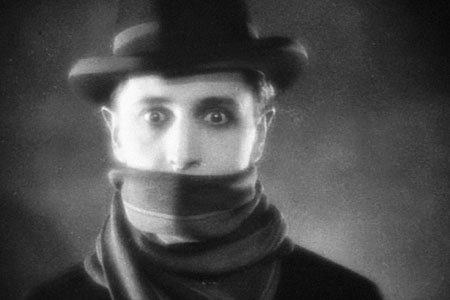
Alfred Hitchcock’s films before The Lodger had plenty of his characteristic inventive camerawork and playfulness, but this is the one where he overtly hits the themes that he’d explore throughout his career: suspicion of people close to you, public mania, fear of the police. Telling the story of a sexy-but-dangerous lodger, whom our heroine suspects may be Jack the Ripper, Hitchcock builds upon clues and doubts, while making Ivor Novello’s character increasingly intriguing.
84. The Docks of New York (1928)
Director: Josef von Sternberg

Josef von Sternberg is best known for his seven sound films with Marlene Dietrich, but his visual prowess was most at home in the silent medium, allowing him to find warmth and humanity in his actors’ faces. The way he photographs Betty Compson’s suicidal prostitute in The Docks of New York is remarkable. Each crack of hope or despair catches the light perfectly. George Bancroft plays a sailor who rescues the woman while he’s on shore leave, but seems destined to abandon her like all the men who have come before. Compson’s resigned demeanor adds to the stirring poignancy.
83. Dans La Nuit (In the Night) (1929)
Director: Charles Vanel

Starting with documentary-like realism at a coal mine before transforming into a noir-ish tale of murder and betrayal, Charles Vanel’s Dans La Nuit uses those shifting forms to illustrate just how quickly our lives can change in spirit and meaning. Vanel cast himself as both a betrayed husband and the lover who cuckolds him, adding to the film’s disconcerting qualities while showcasing an amazing range on both sides of the camera. Sandra Milovanoff’s performance as the young wife whose whose view of life is torn asunder provides further empathy and asks us to grapple with moral ambiguity.
82. Ben-Hur: A Tale of the Christ (1925)
Director: Fred Niblo
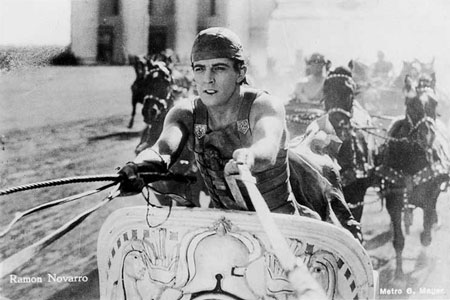
We’re all now well familiar with stories of epic movies with prolonged productions and out-of-control spending, but Ben-Hur: A Tale of the Christ set a high bar early on. The movie brought in more money than any film before it, but still couldn’t recoup its expenses. Yet somehow, after going through multiple directors and lead actors, the film turned out as grandiose as promised—a stirring drama that may be a bit uneven, but nevertheless delivers when it counts. The pirate attack and chariot race represent the ideal cinematic spectacle, pulsating with pure excitement.
81. The Battleship Potemkin (1925)
Director: Sergei Eisenstein

It’s hard to say what Sergei Eisenstein’s most famous film influenced more: the Soviet spirit or film course syllabi. While the novelty of the film’s montage may be a bit overstated (Abel Gance—and he’s not the only one—played gleefully with rapid editing in La roué a couple years beforehand, and many U.S. films were cutting together exciting action sequences at the same time), there’s a genuine excitement and urgency in this workers’ rallying cry.
80. Jenseits der Straße (Harbor Drift a.k.a. Beyond the Streets) (1929)
Director: Leo Mittler
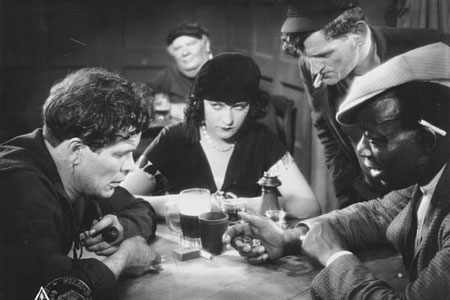
The problem with a lot of silent German (and U.S.) “street films” is that they’re so intent on showing the dark side of society that the movies just become one long barrage of terrible things happening to some poor girl who doesn’t deserve any of it. What sets Harbor Drift apart is that its assortment of characters start in the gutter, and see a chance, in the form of a valuable necklace, to get out. Mittler makes the expected critiques of the class divide, but he also gets deeper into the dark side of human nature with keen expressionistic flare.
79. 7th Heaven (1927)
Director: Frank Borzage
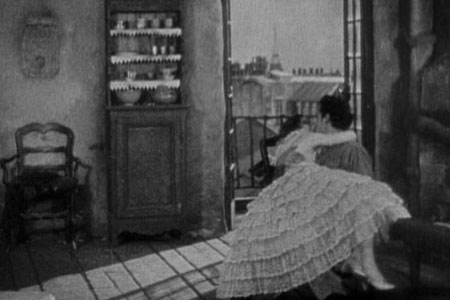
A melodrama of the highest order, 7th Heaven sends you to the heights of romance, then into the trenches of war. Janet Gaynor gave two pure, indelible performances in 1927, as the country wife in F.W. Murnau’s Sunrise and in this film as a long-suffering woman who finds love in a spirited street cleaner (Charles Farrell) before war separates them. Proving that the Academy doesn’t always get things wrong, she won the first Best Actress Oscar—for both films as well as Borzage’s Street Angel (1928), as the rules were bit different at the time. Borzage pulls off some glorious shots, like the camera traveling up the stairs of a humble but high Parisian apartment, but some of his most moving moments are the simplest, like when the two lovers speak to each other while they’re miles away from each other.
78. Flesh and the Devil (1926)
Director: Clarence Brown
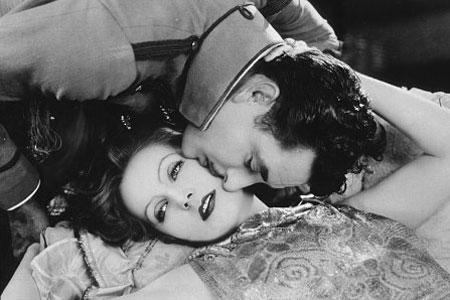
Greta Garbo and John Gilbert had so much chemistry that you could have shot them waiting in line at the DMV and it still would have oozed with sex appeal. But with director Clarence Brown and cinematographer William Daniels working alongside them, there’s enough erotic energy to power the planet for 20 years—if only we could figure out how to harness it. Brown and Daniels use matches, fireplaces, moonlight through a rainy window and even a church window to emphasize the ill-fated yet irresistible relationship. Garbo’s fellow Swede Lars Hanson also deserves attention for his nuanced performance as the third point in the story’s love triangle, but with those two stars, he’s never going to get it.
77. A Cottage on Dartmoor (1929)
Director: Anthony Asquith
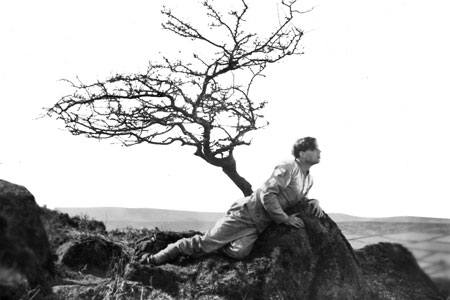
This thriller taps into the darkness of the human soul, depicting jealousy and violence when a love story doesn’t go the desired way. But it also refuses to paint its villain as a monster, instead putting doubt over the degree of malice meant in his jealous actions. Director Anthony Asquith is full of visual invention, finding brilliant cues into flashbacks and creating a chilling atmosphere throughout, excelling in particular when a romance’s outcome becomes clear at a movie house. (The film was made during the transition to sound, and the musicians stop playing for the talkie.)
76. Battling Butler (1926)
Director: Buster Keaton
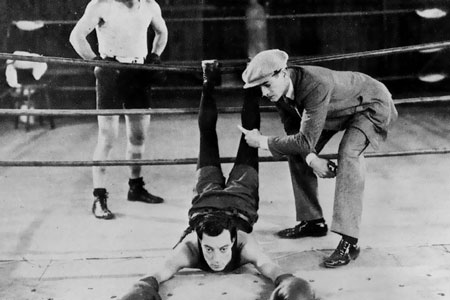
The least grandiose Buster Keaton feature has no train wreck, no cattle stampede, no army of brides. It instead showcases Keaton’s human assets as an actor and director. While never one to ask the audience for sympathy, he still elicits support in his ill-advised endeavors. Keaton and his cameramen’s work with deep-focus cinematography is used not only for comedy but for emotion, such as when the hero’s lady disappears from view out his car’s rear window.
75. Gösta Berlings saga (The Saga of Gosta Berling) (1924)
Director: Mauritz Stiller
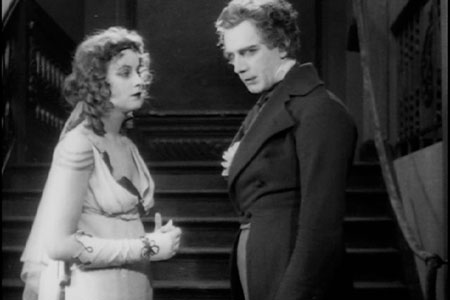
The golden age of Swedish silent cinema ended with a bang via this this epic tale of a drunken priest’s redemption. Mauritz Stiller conjures a series of defining moments in Gosta Berling’s life, including sex scandals, wolves, fire and romance, with a level of grandeur that recalls Gone with the Wind. Lars Hanson carries the film with his fiery eyes and bravado exchanges with costars, including Gerda Lundquist and Greta Garbo (in her first film).
74. The Cook (1918)
Director: Roscoe “Fatty” Arbuckle
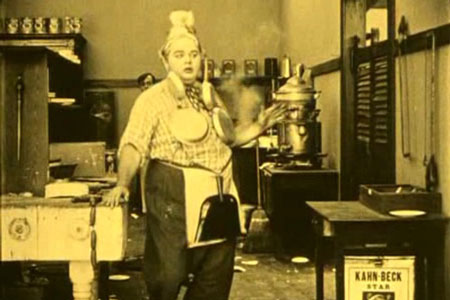
While the known existing prints The Cook are missing some footage, it still stands out as Roscoe Arbuckle’s best two-reeler, zipping along with gags, knife tricks and plenty of physical humor. Arbuckle’s hands are as fast as a magician’s as he sprinkles in a five-fingered ballet amidst the organized chaos. He also does some actual dancing, imitating Theda Bara in Salomé.
73. Happiness (1934)
Director: Aleksandr Medvedkin

To watch a Soviet silent comedy, you must be prepared for some zany surreality. I don’t know how or why, but from My Grandmother (1929) to The House on Trubnaya Square (1928) to The Extraordinary Adventures of Mr. West in the Land of the Bolsheviks (1924), these U.S.S.R. laughers reliably go off the rails, then tie the rails in a knot for good measure. With Happiness, Aleksandr Medvedkin delivers plenty of oddity as a hapless farmer struggles to find his place in society, even after his horse-wife finds hers. But Medvedkin also reigns the film into a better-shaped and tighter-focused narrative than most of his contemporaries, making this the most successful work of the genre.
72. The Last of the Mohicans (1920)
Director: Maurice Tourneur
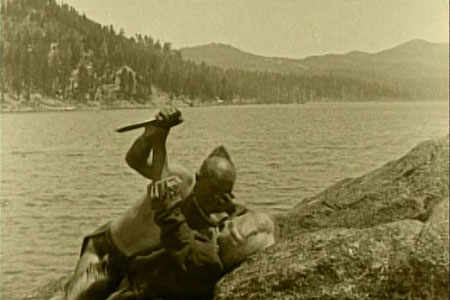
The Last of the Mohicans signifies a passing of the torch. Director Maurice Tourneur fell ill while filming it, and his longtime assistant and apprentice, Clarence Brown, directed a part of it on his behalf. Tourneur was already a visual master, and Brown would of course go on to a storied career, famously making Greta Garbo a star. (See No. 78.) Here, Tourneur and Brown craft an epic tale of men pitted against each other and nature’s elements, with shots of the intimidating, mountainous nature that would make John Ford jealous.
71. Gertie the Dinosaur (1914)
Director: Winsor McKay
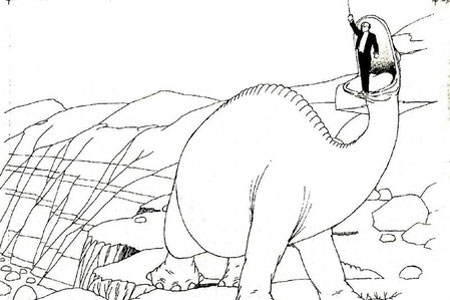
Gertie the Dinosaur toyed with cinema’s potential in two novel ways: animation and augmented live presentation. Cartoonist Winsor McKay was as much a showman as a pioneer, so when he went on the road with his work, he presented people with Gertie, his trained pet dinosaur. He’d stand on stage and order the plucky, not always completely obedient dinosaur around, asking the audience to encourage it to do tricks. Whether you watch the short with intertitles or with someone playing McKay’s part, the real charm is in the incorrigible character.
70. Strike (1925)
Director: Sergei Eisenstein
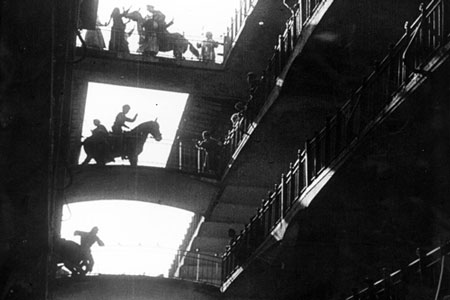
While Sergei Eisenstein is best known for his theories on and use of montage, Strike is most engaging for its dazzling camera trickery. Eisenstein shoots reflections, brings still photos to life and dramatically captures the ill-fated attempt of workers to rise against their exploitative employers. Of course, he still gets in his trademark pointed editing, such as juxtaposing the strikers with the rich factory heads who are “considering” the workers’ demands.
69. Hard Luck (1922)
Directors: Buster Keaton, Eddie Cline

Sometimes failing at life includes failing at ending your life. That’s the problem Buster Keaton’s character faces in Hard Luck. He hangs himself from weak trees, jumps in front of cars that turn out not to be cars and just plain can’t find a way to put himself out of his misery. Note that the wonderfully absurd finale isn’t included in the Kino blu-ray of Keaton’s shorts, but is on the UK Masters of Cinema release and, oddly, Kino’s own Keaton Plus DVD.
68. Show People (1928)
Director: King Vidor
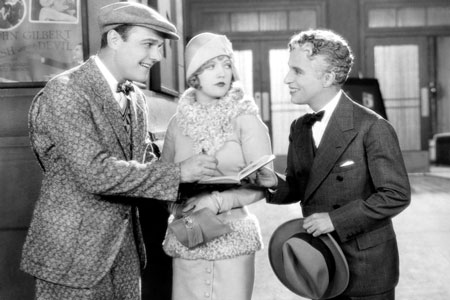
Marion Davies is sadly better known as William Randolph Hearst’s mistress than for her great comedic performances. (Let’s not talk about people’s odd tendency to expect Citizen Kane, which was merely inspired by the life of Hearst, to be more accurate than most biopics that are actually about real people.) No director brought out the magnetic personality that made Davies the life of Hollywood parties better than King Vidor. He made two films with Davies in 1928, The Patsy and Show People, and she’s utterly lovable in both of them. Show People arrived as the silent era was ending, and provides an inside look at the Hollywood studio system (with all the required cameos) and the divide between comedy and high art. As an actress who gets her start in slapstick before becoming a dramatic star, Davies gets to send up various acting styles while always showcasing her own personality.
67. Speedy (1928)
Director: Ted Wilde
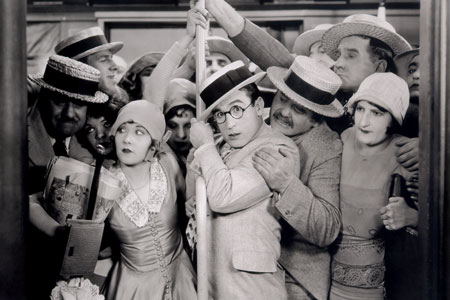
Speedy is Harold Lloyd’s most consistently fun and effortlessly likable film. Take away the marquee race-against-time finale through New York City, and you’re still left with the misadventures of a good-natured boy who just can’t seem to hold onto a job. The romance between Lloyd and his girlfriend (the fantastic Ann Christy) is sweet, and since the film begins after their courtship, has a different dynamic than the typical love story. Oh, and Babe Ruth isn’t too shabby either.
66. Terje Vigen (A Man There Was) (1917)
Director: Victor Sjöstrom
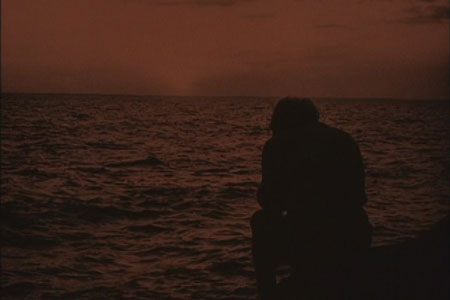
A few short years after starting in film, Victor Sjöström made an essential work that shows off both his love for bold, dynamic compositions and his wide range as an actor. Adapted from the Henrik Ibsen poem, the film follows the life and hardships of a sailor who loses his family, then later comes back in contact with the person responsible for his tragedy. The themes of revenge, forgiveness and redemption would continue throughout Sjöstrom’s career, but they’re particularly deep-felt here.
65. The Gold Rush (1925)
Director: Charles Chaplin
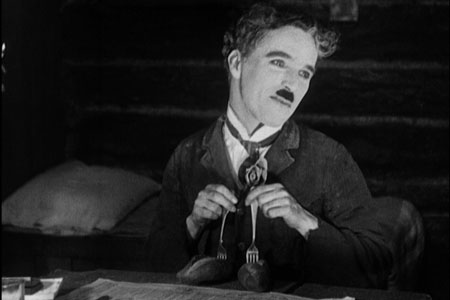
The Klondike gold rush made the perfect setting for Charles Chaplin’s tramp to run wild. Chaplin took all the motifs he could find from adventure novels, melodramas and other stories of the northern frontier, tossed them in a blender and served up a collection of what would become his most famous scenes. He finds humor in peril—with a suspenseful teetering cabin scene, as well as starvation (when he famously makes a meal of his boot) and of course finds time to show off with his dancing roll scene. However, no one has succeeded in finding any humor in the atrocious voiceover Chaplin added to the 1942 rerelease. Be sure to watch the original version. For a more serious take on the Klondike hardships, see Clarence Brown’s The Trail of ’98 (1928).
64. The Cameraman (1928)
Director: Buster Keaton, Edward Sedgwick

Buster Keaton’s first film at MGM would also be the last one on which he was allowed to work the way he wanted with the crew he’d assembled during the previous eight years. That gives The Cameraman a bit of a bittersweet feel when it’s not making you laugh your ass off at a Chinatown riot or wowing you with a long take following Keaton up and down an apartment building’s stairs. Keaton (and many of the other silent comedians) liked to improvise scenes with a crew of gagmen, feeling out and adjusting scenes until they were just right. Shooting on location allowed Keaton to do this one last time before pre-planning and fixed budgets took the magic out of the process.
63. The Thief of Bagdad (1924)
Director: Raoul Walsh
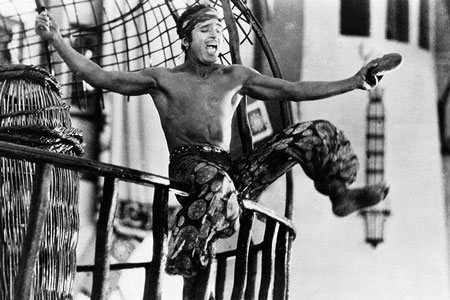
Douglas Fairbanks threw all his resources and energy into making sure The Thief of Bagdad was a rousing piece of entertainment from start to finish. The Arabian Nights fantasy boasts lavish art direction (the costly castle Fairbanks built for Robin Hood was redesigned for the new setting), gorgeous visuals and thousands of fellow actors and extras who bring the fantasy to life. And of course, Fairbanks is in the middle of it all, making everything tick with his elastic gymnastics.
62. L’Hirondelle et la Mésange (The Swallow and the Titmouse) (1920)
Director: André Antoine

A hybrid documentary-narrative, The Swallow and the Titmouse beautifully records the life of a barge captain and his family as they work the river in Belgium and northern France. Little-known French director André Antoine (credited as simply “Antoine”) had a short-lived career, but thankfully left behind these images of life on the barges and in seaside towns, including a sea-goers parade. The structure almost anticipates 2001: A Space Odyssey, as it first calmly acquaints us with a way of life before letting the tense drama unfold.
61. Blackmail (1929)
Director: Alfred Hitchcock
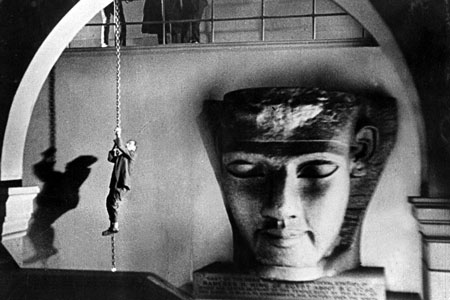
Alfred Hitchcock’s first sound film was also his last silent, as Blackmail was made in both formats. While the sound version is known for Hitchcock’s experiments with the new technology (most famously a scene that emphasizes the word “knife”), the silent version flows much smoother. And Donald Calthrop’s performance of the blackmailer feels even creepier with just his face and body language doing the job.
60. The Playhouse (1921)
Directors: Buster Keaton, Eddie Cline

The sight of nine Buster Keaton’s dancing in sync with each other in this two-reeler may seem like an impressive technical feat for 1921—and it did involve exposing the same roll of film nine times, with the cameraman manually cranking at the same speed each time. But in fact, Georges Méliès pulled off similarly impressive shots more than a decade earlier. What makes The Playhouse special is how thoroughly realized the theater of Busters is—featuring actors, the orchestra pit and the audience—and how it riffs on notions of identity and ego. (“This Keaton fellow seems to be the whole show.”) After Buster wakes from his dream, only to find himself back on set in a clever reveal, the gags continue to draw on the notion of doubles and multiple roles. If that weren’t enough, you get to see Keaton pretend to be a monkey.
59. The Great White Silence (1924)
Director: Herbert Ponting
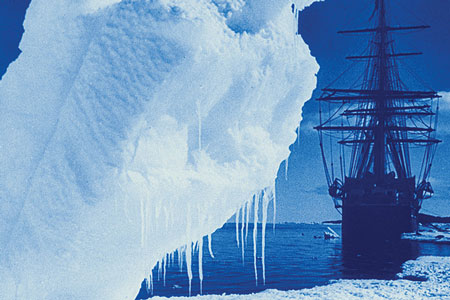
In the early 20th Century, many explorers set off to Antarctica and the South Pole in the name of country and science. English photographer Herbert Ponting came along to take pictures and film Robert Falcon Scott’s Terra Nova expedition, and, luckily, didn’t follow Scott and his small crew to the South Pole itself, or we wouldn’t have this film. It features breathtaking tinted shots of the icy landscape, and personal moments with the crew and their adorable pets. (Watch the film with an audience for a communal struggle between love for the cute, plucky black cat and disgusted shock at his racist name.) Ponter’s eye for composition is great, but the film also acts as a cultural time capsule, showing how people once viewed the world and its unknown areas.
58. Die Büchse der Pandora (Pandora’s Box) (1929)
Director: G.W. Pabst
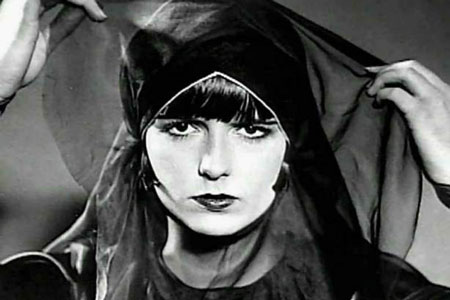
Pandora’s Box starts off scandalous and voyeuristic, then descends into a nightmare. By the time the film lands in the dirty, Jack the Ripper-haunted streets of London, the posh digs of the early scenes are but a distant memory. While it’s often said that Louise Brooks’s character, Lulu, leads the men who love her to ruin, director G.W. Pabst and his lead actress make it more complicated than that. Yes, things generally don’t turn out well for her lovers, but that’s often as much their fault as hers. Brooks has a lot of fun with the camera while giving her seductive performance, but there’s also a melancholy beneath the surface, suggesting Lulu is as much a victim of circumstance and the world we live in as anything else. She’s trying to play her way out of a losing hand, and has to go all-in.
57. The Wind (1928)
Director: Victor Sjöström
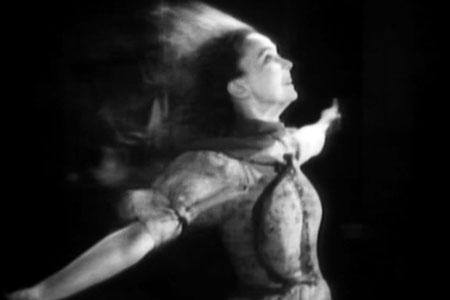
When Swedish director Victor Sjöström came to Hollywood (working under the surname Seastrom), he quickly showed an ability to make films that distill his stars’ best traits. Lillian Gish essentially returned the favor when she brought him onto an adaptation of Dorothy Scarborough’s novel The Wind, whose battle-with-the-elements plot was a perfect match. Sjöström had proven himself a master of capturing the outdoors in his Swedish work, and here he harnesses the weather to create wind and sand that are as much characters as the film’s fine actors.
56. Seven Chances (1925)
Director: Buster Keaton
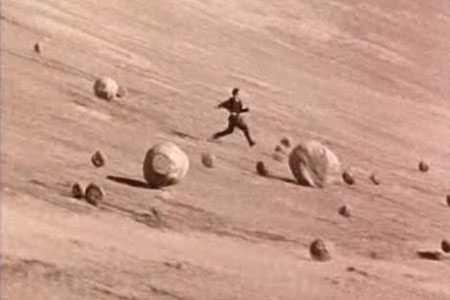
Forget the silly a-day-to-get-married plot—Buster Keaton didn’t actually like the play Seven Chances was based on—and simply marvel at how the film’s gags build and build in a glorious crescendo. Even though you know that giant swarm of brides is coming, the twists and turns of the chase deliver laughs every time. For a great example of The Great Stone Face’s deadpan acting, see his reaction when he has angry brides in one direction, and a landslide in the other. On an unfortunate sidenote, a few scenes are marred with completely unjustified racist humor.
55. The Last Laugh (1924)
Director: F.W. Murnau
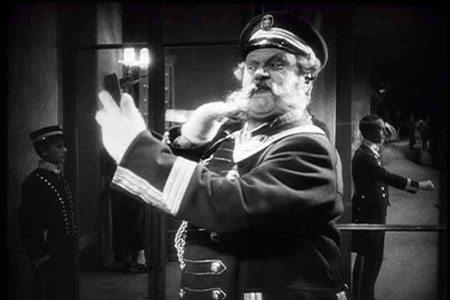
There’s not a whole lot of plot in The Last Laugh, but with F.W. Murnau directing and Emil Jannings starring, you don’t really need one. This has become the go-to film school example of how German Expressionism can be done with camera angles, movement and effects rather than artificial sets a la The Cabinet of Dr. Caligari (1920). Janning plays an overly proud hotel doorman who loses his sense of pride when his employers deem him too old to continue his job. Without the stately uniform his job provided, his proud stance becomes hunched and crumpled, the buildings seem to crush him, and the respect of his family and neighbors vanishes. The story’s parallels to Germany—especially its uniformed soldiers—in the dire aftermath of World War I are clear but not forced. The final reel, shot at the studio’s insistence, is quite clever in the way it skirts the command for a happy ending. A title card comes up beforehand and declares it all an unrealistic fantasy, then Murnau intentionally makes it so absurd that it only serves to underline the desperation felt in the rest of the film.
54. L’Etoile de Mer (The Starfish) (1928)
Director: Man Ray

Surrealist photographer May Ray set out to do away with trivialities like characters and plots when he made his cinéma pur (“pure cinema”) shorts. In Emak-Bakia, he mixed direct-film (laying nails directly on a film strip and exposing it) with distorted close-ups of motion and all sorts of other trickery to create a mesmerizing experimental trip. In L’Etoile de Mer, he teamed up with poet Robert Desnos to push things in a different direction—making a film that evokes a distant memory of a near-erotic encounter. Punctuated by intertitles with Desnos’s words, Ray shoots his images through rough glass or mirrors to keep the actors out-of-focus—discernible but indecipherable. And so the voyeurism inherent in the medium comes to the forefront, only to be teased with undelivered goods.
53. The Last Command (1928)
Director: Josef von Sternberg

Josef von Sternberg’s visual prowess is rarely called into question, but The Last Command shows off some of his most impactful dramatic work. Emil Jannings (who won the first Best Actor Oscar for his performance) shows off his famous range as a suave general in Tsarist Russia and the broken remains of the same man a decade later, when he lives in Hollywood as an old, out-of-sorts extra who seems to have suffered a terrible trauma. The ultimate testament to von Sternberg’s lighting prowess comes in the final scene, in which he acknowledges the artifice behind the visuals, yet still sweeps us up in their majesty.
52. Berg-Ejvind och hans hustru (The Outlaw and His Wife) (1918)
Director: Victor Sjöstrom
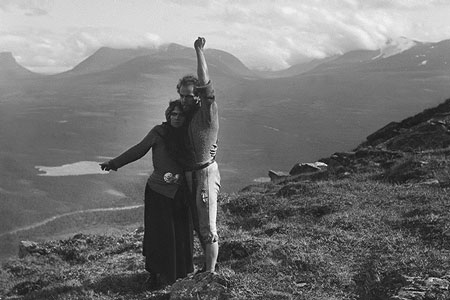
Victor Sjöstrom shows the beauty and terror of both the outdoors and human nature in this story of an Icelandic outlaw who finds redemption and tragedy as he tries to live life. The actor/director moves from town to mountains, using the season and landscapes to help tell his story. The film’s most shocking moments remain startling, perhaps because of how they contrast with the film’s deliberate, carefully crafted manner.
51. There it is (1928)
Directors: Harold L. Muller, Charles R. Bowers
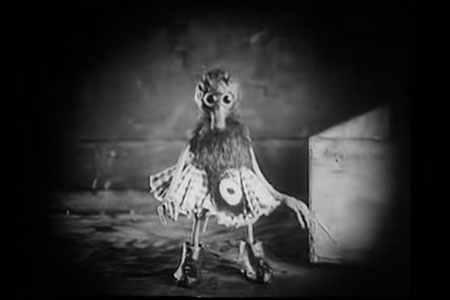
Coming onto the two-reeler scene after the giant silent comedians had graduated to features, Charlie Bowers moved comedy toward a greater level of absurdity, using stop-motion animation and other fantastical/absurd effects. Think of him as the time-traveling result of a night of passion between Looney Tunes and Monty Python. There it is stars the actor/director as a detective from Scotland Yard (visualized like it sounds) who tries to unravel the secrets of a mysterious house with a sidekick he keeps in a matchbox. Any comedian could have walked into that setup, but only Bowers could deliver the must-see-to-believe weirdness that ensues.
50. The Navigator (1924)
Directors: Buster Keaton, Donald Crisp

The Navigator mines an ocean liner for every gag imaginable. Keaton plays a clueless rich young man who finds himself stranded on a giant, adrift ship with the clueless rich young woman who rejected him serving as his only company. These two spoiled upper-class twerps don’t know how to open canned food, let alone operate a ship, and have to improvise in hilarious ways to get things under control. The scene where the two characters each suspect someone else is on the boat, but can’t find anyone else, plays out in classic Keaton fashion: with perfectly timed wide shots that make it more believable that the two keep missing each other. The best moment may be a spooky night when the characters let the creepiness of the boat get the best of them.
49. The Penalty (1920)
Director: Wallace Worsley
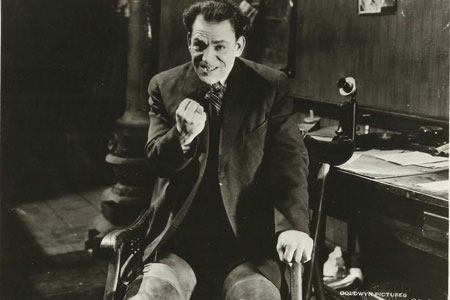
If you want to see how many different terrifyingly sinister facial expressions one man can make, The Penalty is the film for you. No role showcases Lon Chaney’s brilliant acting better than his portrayal of a criminal mastermind who lost his legs as a young child and turned evil in the process. Not even the cop-out ending can dull the impact of the film’s horror.
48. The Immigrant (1917)
Director: Charlie Chaplin
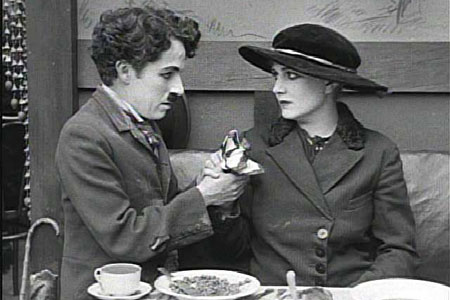
Charles Chaplin was at his best when he was churning out shorts at Mutual, and The Immigrant is his most famous two-reeler for good reason. It embodies his compassionate politics and swift physical humor with a packed structure. Following his little tramp from the boat, where his trademark funny walk vies with the rocking waves, to the tough streets of New York City, the film puts a face on the poor huddled masses, and makes us laugh in the process.
47. The Adventures of Prince Achmed (1926)
Director: Lotte Reiniger

Lotte Reiniger spent three years moving back-lit cardboard cutouts around to make this animated feature adaptation of the ancient Arabian Nights stories. The characters move with their own unique rhythms, taking on an otherworldly feel. The silhouette format naturally limited what could be communicated via facial details and the like, but that didn’t stop Reiniger from using her careful craftsmanship and design skills to create emotionally expressive body language.
46. The High Sign (1921)
Directors: Buster Keaton, Eddie Cline
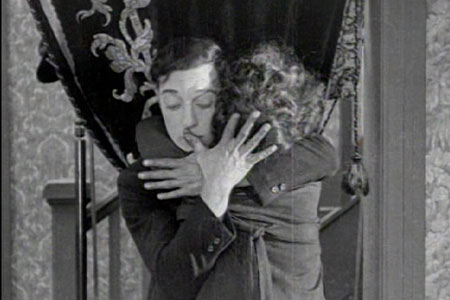
Buster Keaton made The High Sign as his first two-reeler as director and solo star, but shelved it because he didn’t think it was good enough to be his debut. This is indicative of either incredibly high standards or insanity. Keaton plays an unapologetically unscrupulous wanderer who happily accepts two jobs—one as assassin for a secret society and the other as a bodyguard for the man he’s been hired to kill. The film is hilarious from its opening broadsheet newspaper gag (one that may have finally hit a generation that won’t appreciate it) to the fast-paced finale that plays off of several secret passageways and trapdoors.
45. Diary of a Lost Girl (1929)
Director: G.W. Pabst

The ruined lives of disgraced women is a common theme in socially conscious silent pictures, as heroines become the victims of circumstances that lead only toward a more scandalous, sad life. G.W. Pabst’s film stands above the pack thanks to Louise Brooks’s strong, attitude-filled performance and a greater indictment of social attitudes toward “lost girls.” It targets not only lecherous men, but the people who see shame as a greater reformer than compassion.
44. When the Clouds Roll By (1919)
Director: Victor Flemming

In When the Clouds Roll By, Douglas Fairbanks plays the unknowing victim of a scientist’s plot to make him go crazy via bad dreams brought on by eating food that gives him indigestion. Feel free to re-read that sentence. Yes, it’s ridiculous. And yes, Fairbanks and director Victor Flemming (in his first film) know it’s ridiculous. A few years after this, Fairbanks would have been going too big, too epic to try something so peculiar. But luckily he made this while he could. The opening sequence in particular is a surreal marvel. It’s essentially an homage to Edwin S. Porter’s 1906 film Dreams of a Rarebit Fiend, but with a landmark decade of technological advancement and innovation setting a new standard. Before Fred Astaire danced on the ceiling, Fairbanks ran on it, trying to escape the angry food that was chasing him.
43. Safety Last (1923)
Directors: Fred C. Newmeyer, Sam Taylor
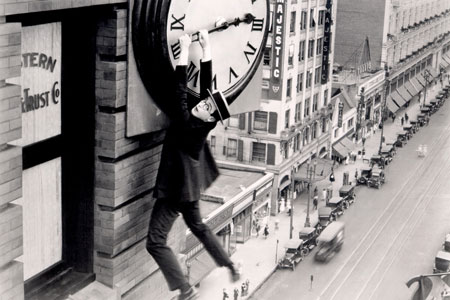
“I shouldn’t have bothered scoring the last 15 minutes,” Rodney Sauer of the Mont Alto Motion Picture Orchestra told me after accompanying Safety Last at the San Francisco Silent Film Festival. He said he and his ensemble couldn’t even hear themselves over the uproarious laughter in the Castro Theatre during Harold Lloyd’s famous building-scaling sequence. The scene, with its famous clock-hanging finale—is such a perfect mix of suspense and comedy that it doesn’t much matter that the rest of the film seems to exist merely as a lead-up to it.
42. Intolerance (1916)
Director: D.W. Griffith
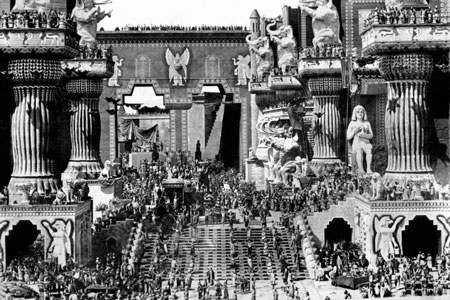
As ambitious in structure as it is grand in execution, Intolerance is designed to wow. It succeeds with a meticulous recreation of Babylon, shown in jaw-dropping elevator shots, and with its four stories from four different eras, cross-cut together to build toward a huge collective climax. Whether or not the subject matter of Intolerance was some sort of attempt by D.W. Griffith to prove that he wasn’t as despicably racist as Birth of a Nation (1916) demonstrated, the concept was ingenious and ambitious, especially during the years when cross-cutting was still being perfected. The four stories don’t always tie together completely coherently, but Griffith does what he does best: milk each scene for all the excitement and melodrama he can.
41. Downhill (1927)
Director: Alfred Hitchcock

Known in America as When Boys Leave Home, Downhill shows Alfred Hitchcock in full control of his craft. While the film isn’t in the director’s trademark thriller genre, Hitchcock’s style is on full display as he shows Ivor Novello’s character mentally deteriorate using dramatic angles and camera effects. A delirious fever scene is particularly disturbing, pointing to the shocking, unsettling moments the director would deliver throughout his career.
40. München-Berlin Wanderung (Walking from Munich to Berlin) (1927)
Director: Oskar Fischinger
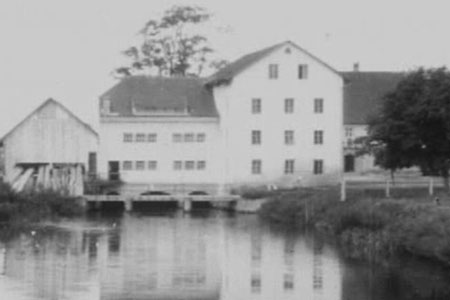
Before Oskar Fischinger made his groundbreaking music-synchronized abstract animation, he documented his walk through the German countryside one frame at a time to make this short film. As jittery images of people, time-lapses of fields and other moments whiz by, we get the impression of a long journey condensed into a short, lasting memory.
39. Big Business (1929)
Directors: J. Wesley Horne, Leo McCarey
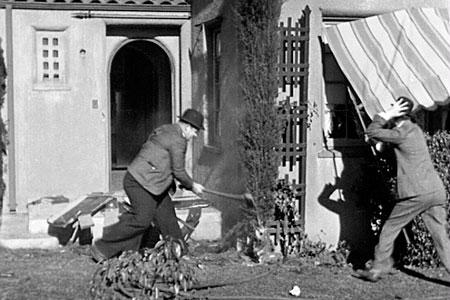
Laurel and Hardy loved to make shorts with a series of dramatically escalating destructive exchanges. The year before Big Business, they made Two Tars, in which a traffic jam turns into a free-for-all of destruction. Big Business uses fewer characters, yet brings the violence to even greater levels, making it the ultimate tit-for-tat two-reeler. Stan and Ollie play clueless Christmas tree salesmen in sunny California who piss off a grumpy sales target (James Finlayson), and decide to enact revenge on his rude behavior, only to find that he’s just as stubborn and bent on revenge as they are. This is a great example of how to build a gag as far as it can possibly go—then push it a little further for good measure.
38. The Sinking of the Lusitania (1918)
Director: Winsor McCay
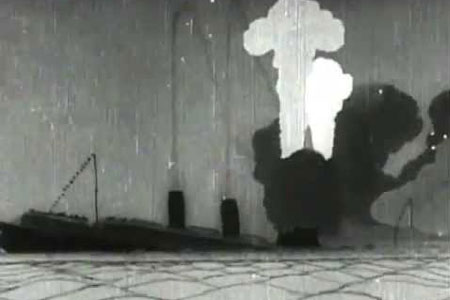
Cartoonist-turned-animation pioneer Winsor McCay took the art form to a new level with this vivid, heart-rending propaganda piece about the torpedoing and sinking of the Lusitania ocean liner off the coast of Ireland on its way from New York. While some of the anti-German intertitles are cringe-worthy, the artistry on display in the rippling water and curving smoke is undeniable. And the scenes of lifeboats spilling passengers and people falling to their deaths are truly disturbing.
37. Finis terræ (1929)
Director: Jean Epstein

Each Jean Epstein film has its own unique feel, separate from the director’s other work as well as anyone else’s. Finis terræ is at once documentary and dreamlike as it tells a story of seaweed harvesters on the coast of Brittany. Epstein shot on location with non-actors using handheld cameras to capture their way of life, yet he also gives his the impression that his subjects’ way of life could soon vanish, becoming nothing but a distant memory.
36. Zvenigora (1928)
Director: Alexander Dovzhenko
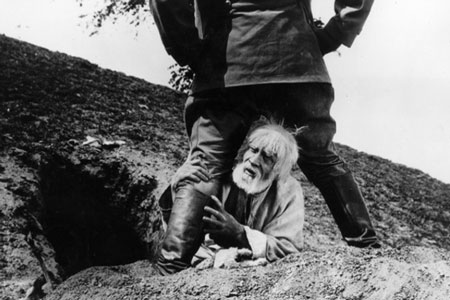
Even at a time when Soviet filmmakers were pushing the limits of the form and veering off in many different directions, Alexander Dovzhenko stood apart from his contemporaries, more interested in poetry than propaganda. The first film in his “Ukraine trilogy” (before Arsenal and Earth), Zvenigora jumps around hundreds of years in the country’s history, blending modern commentary with folk tales and fantasy—all of which links to a buried Ukrainian treasure. While we certainly get to see some bourgeois pigs—including a savage sequence in which rich people want to see a man shoot himself in a packed theater—the work is more about connection to land—and the pain of the fight for it—than the glory of the U.S.S.R.
35. One Week (1920)
Directors: Buster Keaton, Eddie Cline

Buster Keaton wanted to start his career headlining two-reelers with a serious statement of intent, and did so with this wild tale of a newlyweds’ build-by-numbers house gone awry. (Think of it as a home bought at Ikea and assembled by a drunk.) The askew structure alone is a marvel of production design, and it’s as if Keaton and his fellow gagmen kept daring each other take things to the next level. Also watch for a smaller-scale version of Keaton’s most famous sight gag.
34. Rotaie (Rails) (1929)
Director: Mario Camerini

As this Italian film’s title suggests, it’s about the constant motion of the modern age, as a young couple stays on the move, unable to find a place in the industrial age. Director Mario Camerini went on to make tame, socially conservative comedies under Mussolini’s regime, earning him a reputation as a Fascist stooge. You wouldn’t guess that watching Rotaie, a stylistically bold film about social upheaval and aimlessness. The characters experience the life of both the poor and the rich, and the camera reflects their uncertainty at some moments, and boredom at others. In an age where you could travel the world faster than ever before, you could also change your life with the same pace.
33. Maldone (1928)
Director: Jean Grémillon
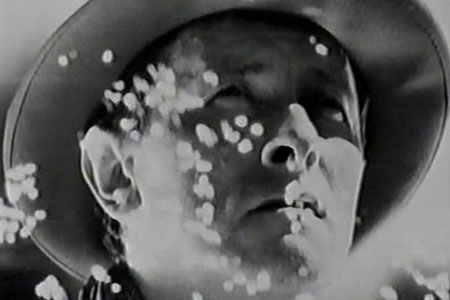
There’s an extended folk-dance scene in Maldone in which Jean Grémillon seems to find every angle imaginable. Grémillon’s dazzling direction in Maldone juxtaposes the simple life with wealthy privilege via the tragic story of a canal worker (Charles Dullin) who abandons life in the country to manage his family’s estate. Genica Athanasiou shines as the gypsy woman he left, and whose memory won’t stop haunting him.
32. The President (1919)
Director: Carl Theodor Dreyer
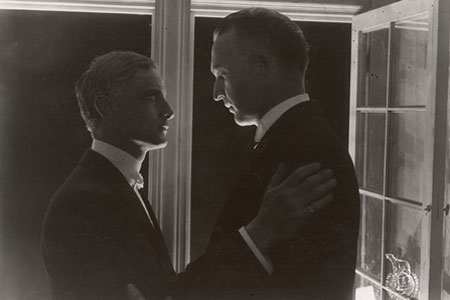
Carl Theodor Dreyer began his career with this story of betrayal, guilt and redemption, which weaves its way through multiple generations. Halvard Hoff plays a Danish town’s “president,” a sort of high judge who must confront the mistakes of his and his family’s past. The currents of feeling are felt strongest during a torch procession scene, which uses color-tinting to great effect.
31. City Lights (1931)
Director: Charles Chaplin
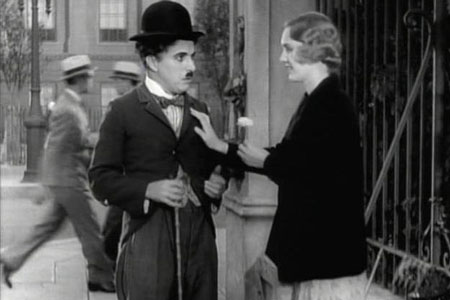
In his later years, Charlie Chaplin was known for bringing pathos into his comedy whenever he had the opportunity. City Lights is the movie where he earns every bit of it. While its structure resembles Chaplin’s usual picaresque format, there’s more of a deliberate purpose as the tramp tries to help a poor, blind flower girl, played adorably by Virginia Cherrill. Harry Myers also deserves a mention for his performance as the millionaire who’s generous when he’s drunk and can’t remember his good deeds when he’s sober.
30. Nosferatu, a Symphony of Horror (1922)
Director: F.W. Murnau
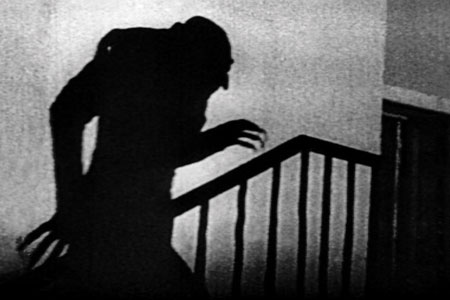
F.W. Murnau defined the horror genre by exploring the deep shadows of the soul in Nosferatu, a Symphony of Horror. While the story is adapted from Bram Stoker’s Dracula—without permission, hence the name Count Orlok—the vampire is not a suave charmer, but an ugly, bald creature with pointy ears. Max Schreck’s performance is legendary, but Murnau’s lighting and atmosphere are what really elevate the film to the embodiment of terror.
29. Napoleon (1927)
Director: Abel Gance
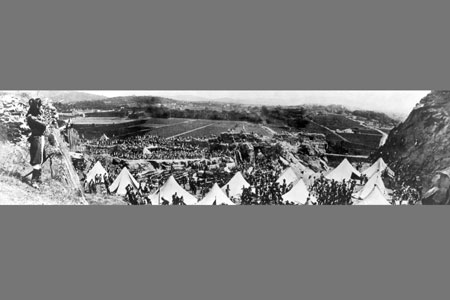
Abel Gance had to invent cameras while shooting Napoleon to get all its unchained shots. The countless creative sequences—in which the camera rolls with waves, swings with patriotic fervor and tumbles through a snowball fight—propel this six-hour epic toward its famous triptych finale. You can read about how that finale features projection on three full-sized synchronized screens. You can even watch it on a TV, in which it shrinks instead of grows to show the panorama. But none of that will prepare you for the grandeur of seeing it in person. Watching on home video, some of the historical-bullet-point flaws in the script come through, but on the big screen, the sheer scale of it is overwhelming. Sadly, there aren’t many opportunities to see it due to the complicated technical hurdles. (The San Francisco Silent Film Festival’s screening in Oakland in 2012 was the first since the 1980s.) So if you have the chance, don’t pass it up.
28. Greed (1924)
Director: Erich von Stroheim
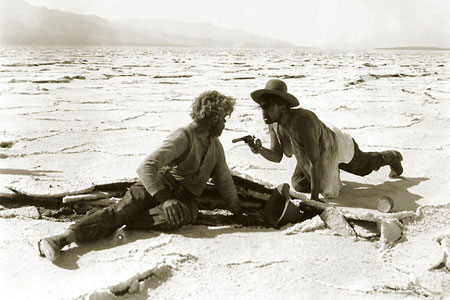
In our current age of acclaimed TV series and cinematic trilogies, Erich von Stroheim might have been a king. But in his time, he had a knack for making movies longer than his bosses deemed releasable. So instead of being split and shown over multiple nights, his eight-hour Greed was cut down to 140 minutes. People who saw von Stroheim’s cut said it was a revolutionary work, but even in its abridged form the genius shines through. The deep-focus cinematography captures the detailed art direction and, most memorably, enables a scene in which a funeral procession passes out a window while a wedding goes on in the foreground. But the greatest moment is the famous desolate desert sequence, during which the value of all the money the characters seek is rendered meaningless.
27. Cops (1922)
Directors: Buster Keaton, Eddie Cline

Buster Keaton would deride any attempt to connect his work to that of Franz Kafka, but it’s hard to resist doing so with Cops, his most elaborate short, about a man with no bad intentions who soon becomes wanted by the entire Los Angeles police department as a thief and a terrorist. Regardless of how much emphasis you place on the themes of persecution and ensnarement, Cops is a gloriously assembled series of building gags. The character remains oblivious to his wrong-doings until they have escalated, leading to a sea of cops chasing Keaton’s little man down the city streets.
26. The Man with a Movie Camera (1929)
Director: Dziga Vertov

Most non-cinephiles don’t want to watch any 70-minute experimental films with no stories or actors, let alone an 85-year-old silent one. But Dziga Vertov approaches his film with such pizzaz and vigor that he could convert them. Playing with the mechanics of photography and of everyday machinery in footage shot across four Russian cities, Vertov builds to an orgasm of slow motion, multiple exposures, Dutch angles, stop-motion animation, tracking shots and split screens. Even if you watched it without accompaniment, the result would be bombastic.
25. The Big Parade (1925)
Director: King Vidor
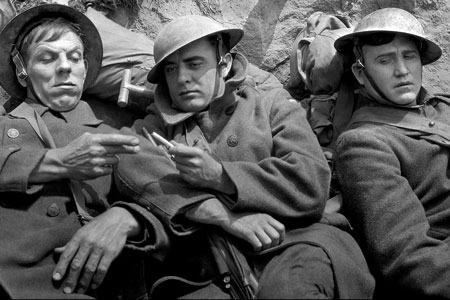
King Vidor’s long, successful career as a director covered several decades of the sound era. But he was at the height of his artistic powers making silents, routinely turning out exquisitely crafted films with great performances. His epic World War I saga The Big Parade set the stage for All Quiet on the Western Front and all the war movies that came after. Rather than romanticizing war as heroic, Vidor shows boys swept up with the idea of patriotic duty, only to find themselves in the terror of battle.
24. A Child of the Big City (1914)
Director: Yevgeni Bauer

Russian director Yevgeni Bauer is one of the great unsung hero of the movie camera. Things you learned the Americans or the Germans did first in the 1920s, he did several years earlier. His traveling camera shots in The Child of the Big City emphasize the opulence that a poor seamstress enters into, then devours with no regret. The melodrama’s story is strange, and runs contrary to the typical image of the poor city girl, making the conclusion a small nightmare. Other Bauer films to seek out include After Death, The Dying Swan and The Revolutionary.
23. Faust – Eine deutsche Volkssage (Faust) (1926)
Director: F.W. Murnau
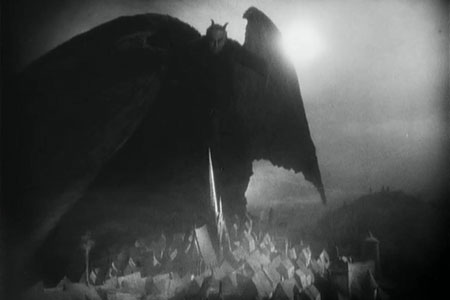
Faust was F.W. Murnau’s final German film before he left for Hollywood, and he bid his native country farewell with serious style. This technically elaborate, big-budget epic set the stage for Metropolis’s production the following year, and its special effects get the job done as well as any in cinema’s history. The techniques Murnau played with in The Last Laugh are used to even more impressive ends, as the camera races through the foggy, hellish landscape. The actors are also in fine form, with Emil Jannings standing out (as usual) with his menacing Mephisto.
22. Die wunderbare Lüge der Nina Petrowna (The Wonderful Lies of Nina Petrovna) (1929)
Director: Hanns Schwarz, 1929

The Wonderful Lies of Nina Petrovna has two things elevating it above your typical wartime melodrama: Brigitte Helm’s inviting performance and director Hanns Schwarz’s gorgeous visuals. Helm plays the title character, a colonel’s mistress in Tsarist Russia who falls for a poor young officer (Francis Lederer), much to the anger of her rich lover (Warwick Ward). Lederer and Ward are great as the innocent fool and the sinister schemer, but Helm steals the show, showing a vulnerability even in the irresistible seduction scenes. Schwarz’s floating camera’s movement helps underline the circular structure by revisiting the opulent opening scene at the film’s end, but with a darker context.
21. Panoramic View of the Morecambe Sea Front (1901)
Directors: Sagar Mitchell and James Kenyon
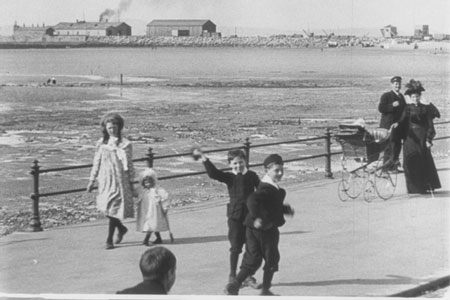
The Mitchell & Kenyon film company created hundreds of films in Great Britain, but their best material is their “actualities,” documenting every day life at the turn of the century. Panoramic View of the Morecambe Sea Front is particularly captivating as the camera travels through the English beach resort town, observing the different people on holiday as it passes by. In the age where anyone can shoot a video on their phone and upload it to YouTube, it’s hard to remember just how special it is to have a record of life at this place and time, and share curious glances with people long dead. Mitchell and Kenyon films from the British Film Institute, along with other archival titles, can be viewed on the BFI player.
20. A Page of Madness (1926)
Director: Teinosuke Kinugasa
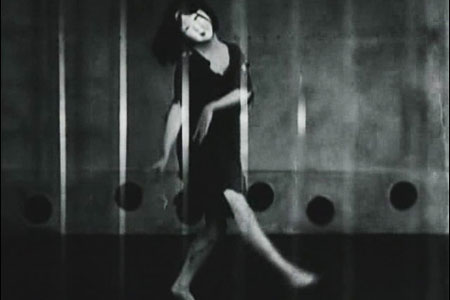
If you think Germany cornered the market on dark examinations of the psyche during the silent era, think again. Teinosuke Kinugasa’s A Page of Madness (sometimes translated as A Crazy Page, hard to find under any title) explores fractured, chaotic minds held captive in a mental institution. Do not expect something that is quaint by today’s standards. This thing will still blow your mind. Telling the story of a man who works as a janitor in the institution in the hopes of freeing his wife, the film contains no intertitles, making the plunge into insanity all the deeper. Kinugasa’s use of distorted lenses, multiple exposures and dazzling editing are made more impressive when you learn that the director hadn’t seen much of the European work that he appears to be emulating.
19. H2O (1929)
Director: Ralph Steiner
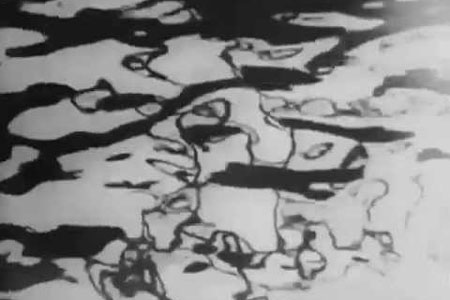
H2O is more about the camera’s ability to both document and distort than it is about the liquid of our lives. The silent era is full of compelling tone poems and studies of subject matter, as filmmakers toyed with how the camera could record reality. Ralph Steiner’s short short sets itself apart with the way its shots of water slowly become less and less recognizable. By the end, the image looks more like abstract animation than ripples on the surface of the familiar fluid.
18. Metropolis (1927)
Director: Fritz Lang

Metropolis never slows down as it delivers a constant stream of iconic images. Fritz Lang filled the parable with all the sci-fi/adventure tropes he could: the mad scientist, the robot, the rooftop chase, the catacombs and, as it turns out, a devious henchman. Metropolis is a great reminder of just how difficult it is to judge an incomplete film. Many silents are missing material, even when it isn’t made clear in screenings or on home video. Fritz Lang’s Metropolis has always been known for its spectacular special effects—it’s legally required that I use the phrase “visionary” while discussing it—but not until a few years ago did modern audiences see a film anywhere close to the one that first premiered. It turned out that the film’s best performance, Fritz Rasp as a ruthless spy for the corporate state, gives the film a greater sense of urgency and increases the feeling of rich dwarfing the poor. With that unknown excellence lurking in one of the most famous films of all time, it leaves us to wonder what else was lost in nitrate flames.
17. The Scarecrow (1921)
Director: Buster Keaton, Eddie Cline
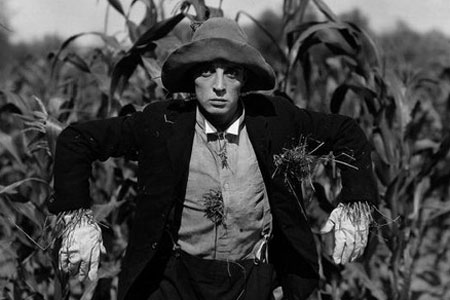
There are Buster Keaton two-reelers with more ambitious special effects, more epic stunts and more elaborate chase scenes, but in my experience, none get more laughs than The Scarecrow. The film never stops to catch a breath as it moves from place to place, always setting up and paying off new laughs. The best moments include an ingeniously designed one-room house, an appearance from the great Luke the Dog, and some truly divine knockabout between Keaton, Joe Roberts and Keaton’s father, Joe.
16. Tabu: A Story of the South Seas (1931)
Director: F.W. Murnau
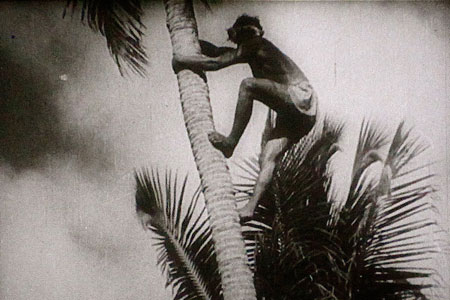
F.W. Murnau’s final film before his tragic death underlines just how capable he was of adapting from one style to the next. Stepping away from Hollywood, he collaborated with famed Nanook of the North documentarian Robert J. Flaherty, who wrote the screenplay with Murnau and directed the opening scene. Murnau documents the lives and culture of indigenous Pacific Islanders while also weaving a tragic love story. The quietly harrowing final sequence ensures that the film will never stop lingering faintly in the mind.
15. The Fall of the House of Usher (1928)
Director: Jean Epstein
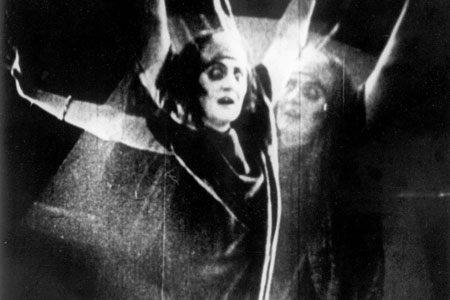
Jean Epstein’s The Fall of the House of Usher has such an otherworldly feel, it seems you could get lost in the ether just watching it. Multiple exposures were much more common in the silent era, as directors attempted new ways to visually communicate ideas, but Epstein takes it to another level, with layers of visual fog that add dread to each shot. Whether we’re simply watching a dog running away or witnessing a house fall to ruin, Epstein evokes Edgar Allan Poe’s morbid fright whether or not he’s paying much mind to the details of the source material.
14. Menilmontant (1926)
Director: Dimitri Kirsanoff

Watching Menilmontant is a deeply felt experience. Impressionist filmmaker Dimitri Kirsanoff takes the dreamlike qualities of silent cinema to their natural conclusion, letting the story float by alongside haunting imagery without any intertitles directing hot to interpret the story. Kirsanoff made only one other film before this bold work, which starts abruptly and brutally with a man murdering a couple, then follows a love triangle involving the dead parents’ two daughters once they’ve grown. For all his cinematic innovations, Kirsanoff is not too hoity-toity to to tug the heartstrings, and a scene with a kind old man on a park bench is one of the most touching you’ll ever see.
13. The General (1927)
Directors: Buster Keaton, Clyde Bruckman
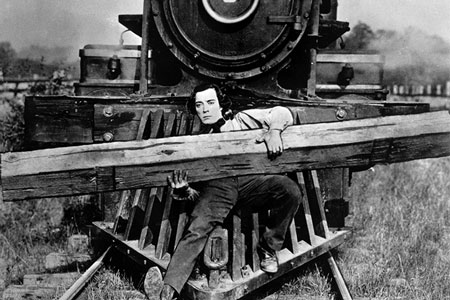
A Buster Keaton chase sequence is like a great piece of music, gliding effortlessly from one variation on a theme to another, building gag upon gag until the explosive climax. Plenty of other filmmakers made chases with the same sets of notes, but none played them so fluidly. The General, then, is like a grand symphony—one long, sustained chase back and forth across the landscape of the Civil War. After a brief prologue to establish the characters, our hero is either chasing or being chased as the camera tracks across the authentic Civil War landscapes. The tightness of the narrative, combined with the large-scale gags, makes this many people’s favorite Keaton film—if not simply their favorite silent.
12. The Man Who Laughs (1928)
Director: Paul Leni
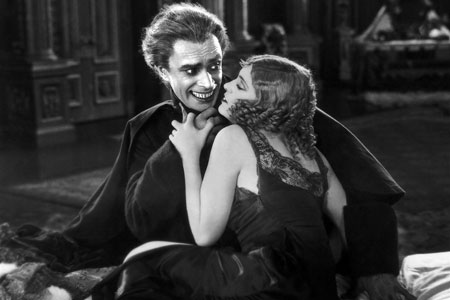
It’s impossible to say that one dramatic silent film performance is definitively the best, but Conrad Veidt’s portrayal of Gwynplaine in The Man Who Laughs comes pretty damn close. Veidt’s makeup famously inspired the creation of Batman villain The Joker, but those who only know that creepy image may be surprised by just how fragile, delicate and sympathetic the character is. Adapted from the Victor Hugo novel about a man whose face was disfigured into a permanent smile at childhood as a punishment to his father, the film has everything—sex, humor, despair, joy, suspense, thrills and serious pathos. And director Paul Leni miraculously brings it all together for as exhilarating a conclusion as you’ll find in the movies.
11. La Sortie de l’Usine (Workers Exiting the Factory) (1895)
Director: Louis Lumiere
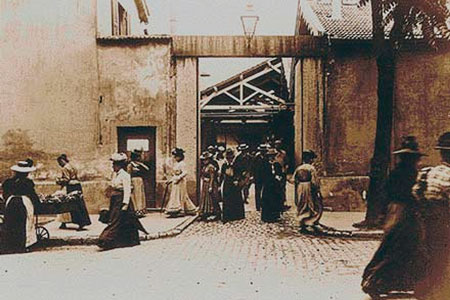
First does not always equal best—just look at some of the stodgy Edison films shot in the “Black Mariah” studio, But the Lumiere brothers created a very special demonstration of the medium’s power for the first public exhibition of their invention. It lays out cinema’s potential in less than a minute. We see several different employees of the Lumiere factory walk by the camera, all with different personalities—some already knowing to ham it up for the scene. No poem, novel, still photograph or painting could show the moment in the same way. There’s a palpable exuberance in each person’s face, knowing that they’re part of something big.
10. Jujiro (Crossroads a.k.a. Crossways) (1928)
Director: Teinosuke Kinugasa

Japanese master Teinosuke Kinugasa’s two landmark works of silent expressionism, Jujiro and A Page of Madness, have not been as widely seen as they deserve to be. Jujiro, the comparatively calmer, more introspective of the two, tells the story of a sister’s despair as her brother loses his mind over a woman in the red-light district of Edo. Playing the sister, Akiko Chihaya gives the film its emotional core and grounds it in reality as the rest of the world disintegrates into a grotesque fever dream. If you ever have the chance to see the film live with Stephen Horne’s piano-and-flute score, do not miss it. It will be one of the most emotionally draining experiences of your life.
9. He Who Gets Slapped (1924)
Director: Victor Sjöstrom

“I say serious things, and people laugh!” Such is the simple tragedy of Lon Chaney’s character in Victor Sjöstrom’s He Who Gets Slapped. Chaney plays a great scientist who loses his ideas and wife to a scheming baron, then becomes a clown so he can re-live the humiliation in the circus ring every night. Sjöstrom crafted the best Chaney film of them all by taking taking all of Chaney’s favorite obsessions and exaggerating them even more than usual. The main character is sympathetic yet terrifying, an amplification of all our biggest fears and hangups. When the circus calls him onto the stage one last time, it’s the grand exit of all grand exits. Not for people with coulrophobia. (Unfortunately, the soundtrack on the Warner Archive DVD leaves something to be desired. He Who Gets Slapped deserves a fine score, like the one the Matti Bye Ensemble played at the San Francisco Silent Film Festival in 2011. Hopefully it’ll be available some day.)
8. Our Hospitality (1923)
Directors: Buster Keaton, Jack Blystone
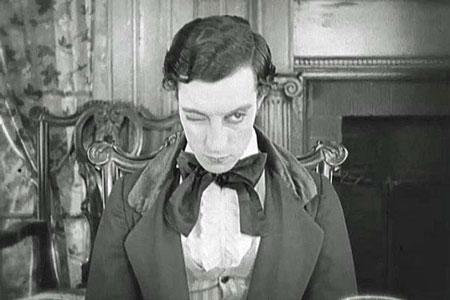
Buster Keaton was never one for grandiose social commentary, but he loved observing absurd human behavior. So he had no trouble making Our Hospitality, about a generations-long family feud that comes head-to-head with a southern hospitality code. That code says that you can’t kill someone when they’re a guest in your house, so when Keaton’s character unknowingly stumbles into his enemy family’s home, he can’t leave. Keaton has a great time attempting escapes, with the inside of the house serving as his safe zone if things go wrong. The funniest moment is the dinner prayer, during which everyone is watching everyone else rather than actually praying. A river chase sequence, including a killer waterfall stunt, brings things to a perfect climax. And I didn’t even mention the first act’s use of Stephenson’s Rocket—the historically accurate, ridiculously puny train that transports our hero from New York City.
7. I Was Born, But… (1932)
Director: Yasujiro Ozu
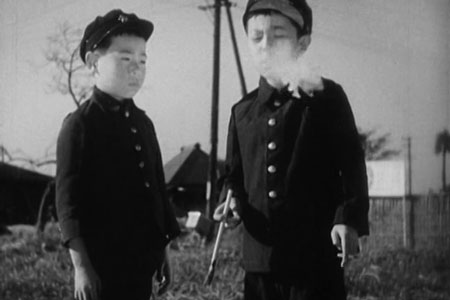
Yasujiro Ozu spent his career making wonderful films about the dynamics of families and relationships, but this one may do its job more adorably than any of his others. It uses a couple of achingly cute kids to examine the compromises of adulthood and the disillusion of growing up. When two brothers realize that their father isn’t the big shot in real life that he is in the house, they lash out with petulance, feeling they’ve been lied to. The comedy comes with a delicate understanding of its characters and the importance of realizing when you’ve hurt someone more than they’ve hurt you.
6. The Passion of Joan of Arc (1928)
Director: Carl Theodor Dreyer
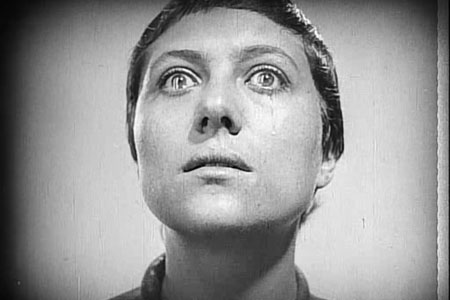
It’s generally wise to avoid courtroom scenes, but that’s not the only rule Carl Theodor Dreyer breaks in this emotional firebomb. With bizarre framing and a disorienting sense of space, Dreyer disarms his audience, then hits them with serious impact. Isolating Maria Falconetti as Joan from the clergymen judging her fate, the director often gives us nothing to look at but the actress’s face, and that is, simply, enough.
5. Steamboat Bill, Jr. (1928)
Directors: Buster Keaton, Charles Reisner
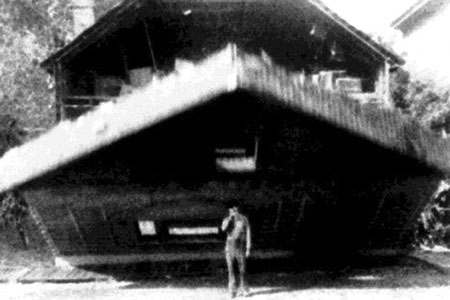
Steamboat Bill, Jr.’s climactic cyclone sequence—which is at once great action and great comedy—would on its own earn the film a place on this list. The iconic shot of a house’s facade falling on Keaton is only one of many great moments in the free-flowing, hard-blowing sequence. But the film also showcases some of Keaton’s best intimate acting, including a scene in which his father tries to find him a more manly hat, and a painfully hilarious attempt to pantomime of a jailbreak plan.
4. Sunrise (1927)
Director: F.W. Murnau
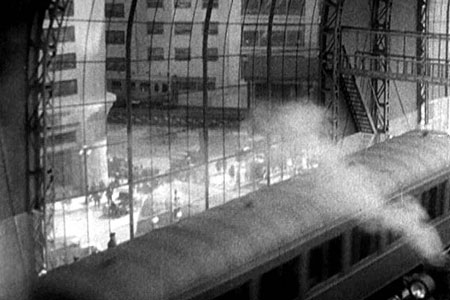
During the last few years of the 1920s, the excitement was palpable as brilliant filmmakers pushed to unlock the medium’s full potential. Sunrise was born of that ambition, as Fox brought German genius F.W.Murnau to Hollywood, where he and his cameramen used all the resources at their disposal to create some of the most stunning visuals ever put on celluloid. Telling the story of a husband who strays and then tries to redeem himself, Murnau’s camera flies over country fields, gets tangled in the bustle of the city and desperately looms over a lake in a storm, while his actors, George O’Brien and Janet Gaynor, radiate with sincerity.
3. Un chien andalou (1929)
Directors: Luis Buñuel, Salvador Dali
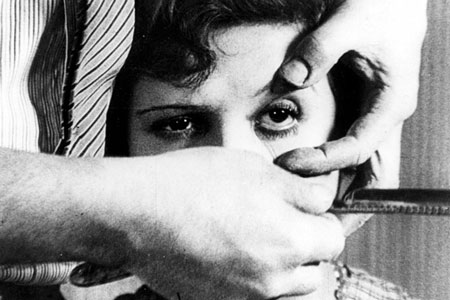
Best known for, as Black Francis of Pixies put it, “slicing up eyeballs,” Un chien andalou’s most famous shot is just the overture to the surreal masterpiece’s collection of strange, disconcerting images. Collaborating with Salvador Dali, Luis Buñuel launched his career as the undisputed master of surrealist cinema with this unsolvable puzzle of a turbulent love story fraught with religious hangups, violence and ants. Buñuel shows off his gift not only for imagery, but for humor, as title cards like “Eight years later…” and “In the springtime…” suggest a narrative far from whatever it is that’s on screen.
2. The Crowd (1928)
Director: King Vidor
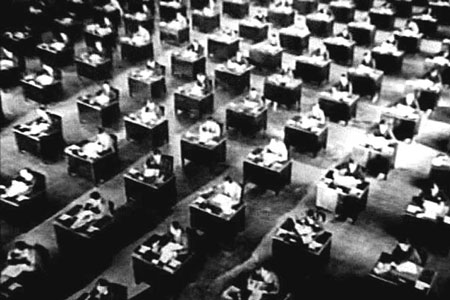
It may be counterintuitive to portray the disappointment of an ordinary life with some of the most extraordinary visual storytelling ever, but King Vidor pulls it off magnificently. His oft-quoted imagery (see Billy Wilder’s The Apartment) reveals an average man lost in a sea of other average men—at a desk among endless rows of desks, on just one floor of a tall building in a giant city. With the help of great performances by James Murray and Eleanor Boardman, Vidor employs a full cinematic vocabulary with flying cameras, tracking shots, expressionistic typography and more. Yet it always serves, rather than overpowers, the story. Without sentimentality, preachiness or melodrama, The Crowd shows that even a big loser can have a story that will break your heart.
1. Sherlock, Jr. (1924)
Director: Buster Keaton
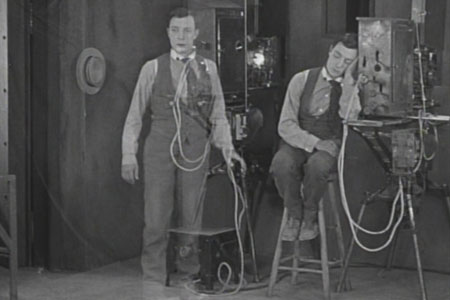
You could make a highlight reel of classic silent comedy moments using only Buster Keaton’s Sherlock, Jr., and no one could justly complain. In the 91 years since Keaton made his love letter to cinema, no one has crafted a better examination of the relationship between the audience and the silver screen. Keaton plays a movie theater projectionist and wannabe detective who dreams he walks into a movie screen and becomes a suave hero—the perfect metaphor for the appeal of the movies. Keaton plays with reality through virtuoso special effects, but also captures genuine stunts in single takes. (He broke his neck in one scene and still finished the take.) He daringly subverts structure—the conflict is resolved halfway through the movie with no help from the hero. He brings visual poetry to slapstick with rhyming gags. The laughs coming from failure in the real world and serendipity in the fantasy movie world, but the mechanics parallel each other. And he strings it all into a romp that never stops moving toward more hilarity.
Jeremy Mathews has been subjecting films to his criticism since 2000, in publications including Paste, In Utah This Week, Salt Lake Tribune, Salt Lake City Weekly and Film Threat. He also runs the blog The Same Dame and fronts indie-pop band NSPS. He lives in Salt Lake City, Utah. You can follow him on Twitter.
GET PASTE RIGHT IN YOUR INBOX
The best music, movies, TV, books, comedy and more.